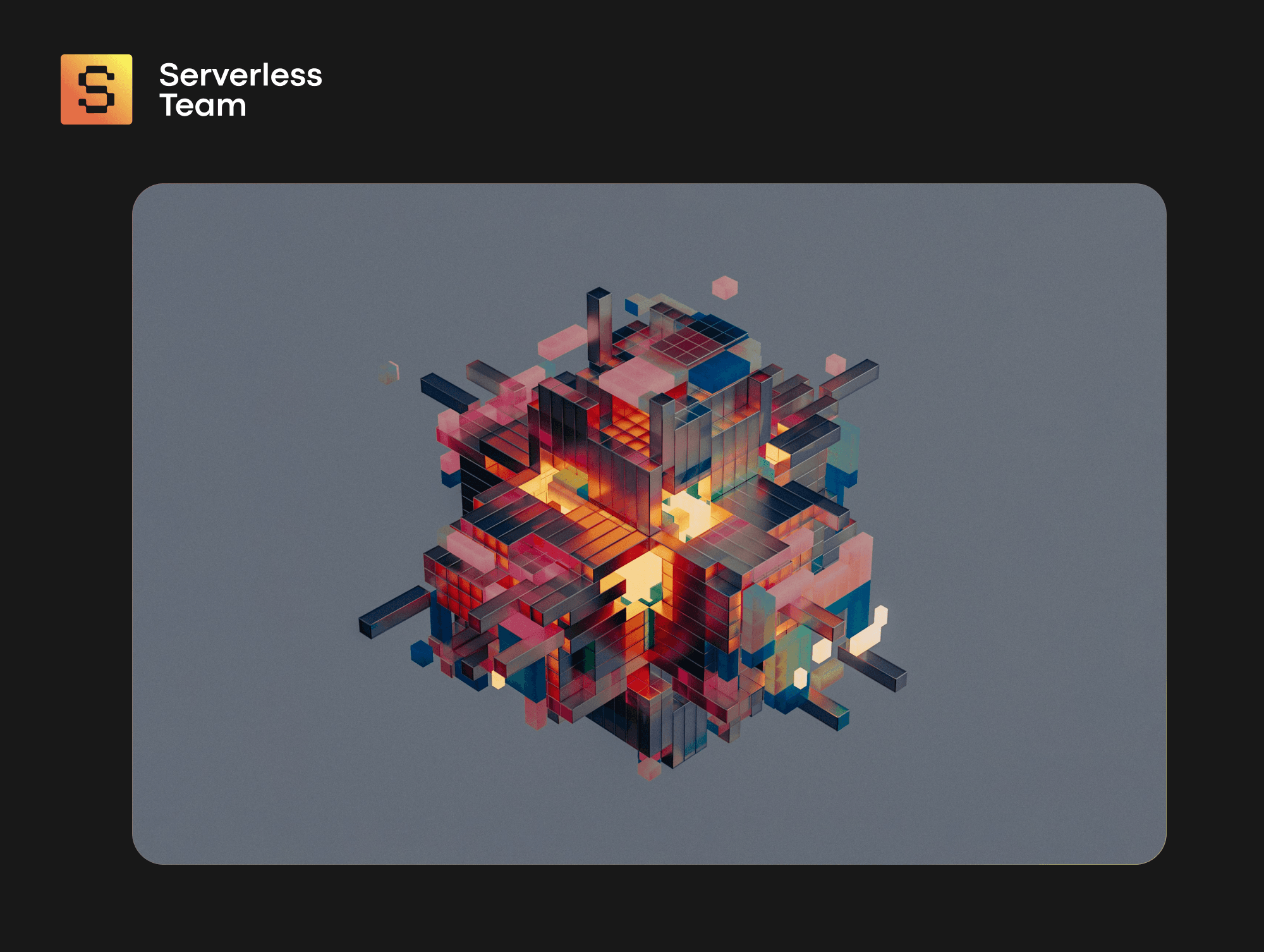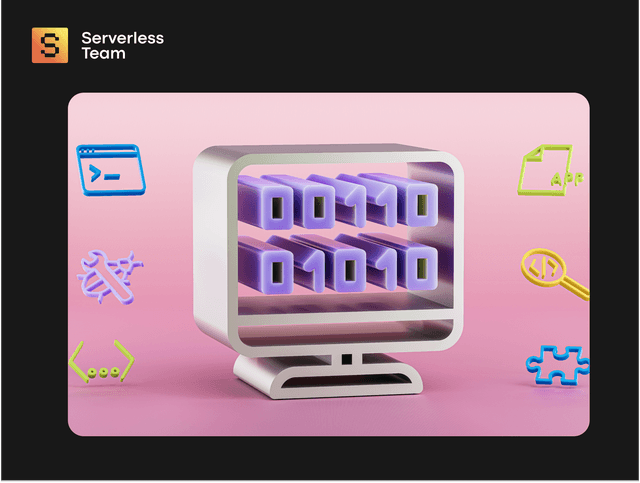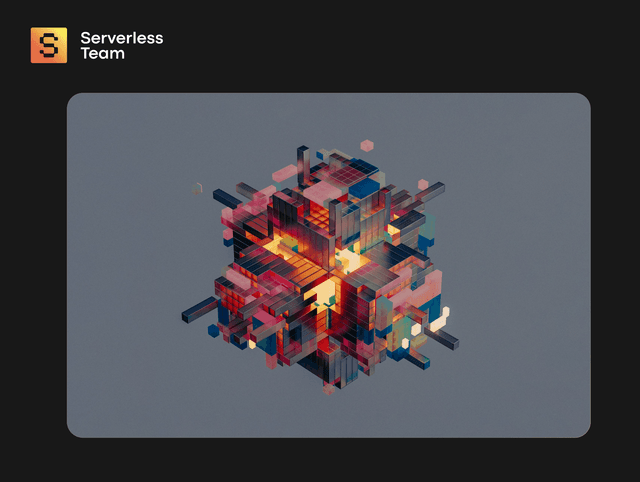Troubleshooting serverless applications is more challenging than traditional ones as it is harder to reproduce issues and perform real-time debugging. Serverless monitoring tools help to find and fix Serverless architecture implementation issues essential to the user experience and system health in serverless computing. Continuous monitoring also allows IT decision-makers to keep an eye on serverless spending.
Serverless is a Ukrainian IT company specializing in serverless apps that leverage AWS and the Serverless Framework. Thanks to our experience in serverless architecture, we develop high-performance applications without managing servers. Our dynamic approach helps our clients achieve faster time to market, smoother scalability, and lower operating costs.
This article reviews the top ten serverless monitoring and debugging tools that provide valuable data regarding performance, errors, and expenses. You will learn the essential characteristics of serverless computing monitoring, its key challenges, and the criteria for assessing and choosing the right tools in 2024. Keep reading to become a pro in serverless troubleshooting.

We take care of serverless development so you can focus on your business
Don't want to wait for our site launch? Let's talk about your idea right now.


Understanding Serverless Monitoring
You need to know the pros and cons of serverless architecture to maintain your app. Monitoring serverless applications allows businesses to evaluate the health of their apps and set up alerts to notify users about problems that arise to improve performance. You can strengthen your serverless apps and identify issues by establishing monitoring metrics. Monitoring is also an essential tool for cost control.
Ensuring seamless operation of serverless apps requires both monitoring and troubleshooting. Let's examine some challenges these assignments present.
- Cold starts: When a function is idle for an extended time, or there is an abrupt spike in traffic, a cold start may happen at the initialization of the function execution environment. It increases response time and makes the user experience worse.
- Insufficient visibility: In a serverless architecture, the cloud provider controls many code tools that aid in monitoring and debugging. Thus, developers need access to connect to the data required for troubleshooting issues.
- Managing asynchronous operations: Event-driven structures and asynchronous operations are the mainstays of serverless applications. Monitoring these asynchronous operations can be challenging and complex, particularly when several functions are involved.
- Limited debugging capacity: Identifying and resolving issues in serverless architecture is challenging as interactive breakpoints and real-time debugging are not supported.
- Distributed nature: Because serverless applications are composed of discrete components, it can be complicated to understand how the entire application functions and what happens at any given time.

Kyrylo Kozak
CEO, Co-founderGet your project estimation!

Criteria for Evaluating Serverless Monitoring Tools
As you see, an efficient monitoring tool must address various challenges to ensure serverless applications' performance, reliability, and efficiency. The choice of monitoring tools can significantly impact how well you can manage and optimize your serverless architecture. Here are key criteria for evaluating serverless monitoring solutions.
Scalability
Serverless applications scale automatically on demand, and serverless databases improve this approach. Tools to monitor serverless applications must be flexible enough to accommodate changing workloads. Your solution should keep up with the increasing quantity of features, services, and events. Seek solutions that can adjust to shifting workloads without sacrificing functionality.
Real-Time Monitoring Capabilities
Tools for serverless monitoring and debugging should provide real-time alerts and metrics to identify and address arising issues quickly. It enabled complete visibility and minimal latency for effective troubleshooting and proactive management of serverless applications.
Ease of Integration
A good monitoring tool should easily integrate with your serverless environment. Look for tools that support popular serverless platforms and frameworks, allowing seamless integration without extensive manual configuration. Integration with existing DevOps and CI/CD pipelines is vital for streamlining the monitoring process as part of the overall development lifecycle.
Customization Options
The tools should offer customization options to tailor monitoring for serverless applications to your needs. It includes defining custom metrics, setting up personalized alerts, and creating dashboards that align with the specific performance indicators relevant to your application.
Cost Considerations
It's essential to understand the pricing model of your serverless monitoring tool. And, of course, how well it aligns with your budget. Evaluate the pricing structure based on the features you need, the volume of data processed, and the level of granularity required in monitoring. Consider tools that provide transparent pricing and a balance between features and cost-effectiveness.
The Best 10 Serverless Monitoring Tools for 2024
Serverless monitoring solutions provide a smooth experience that raises your overall operational effectiveness. However, not every tool is equal. Let’s look at the functionalities, pros & cons, use cases, and pricing models of our top 10.
Amazon Cloudwatch
Amazon Cloudwatch is one of the AWS serverless monitoring tools. It is a comprehensive monitoring solution that integrates with all AWS services. The tool supports real-time custom event creation and monitoring and uses machine learning algorithms for anomaly detection. Cloudwatch collects Lambda metrics by default, but you can enable custom metrics. It gathers data on terminations, volumes, thresholds, and other metrics and then displays it on extensive customizable dashboards.
Pros
- Easy to set up alerts
- Seamless AWS integration
- Alerts and analytics in real time
- Pay-as-you-go pricing model
Cons
- Problematic integration with vendors other than AWS
- No tracking of transactions
- Limited search and filtering capabilities
- Unpredictable pricing at scale
Use cases
- Monitoring application performance with visual data and alarms
- Root cause analysis
- Optimizing resources by setting custom thresholds
- Testing website impact by evaluating user requests, logs, analytics, and data
Pricing model
- Free tier with basic monitoring metrics
- Paid tier with pay-as-you-go model (see AWS pricing calculator)
Lumigo
Lumigo is a serverless monitoring platform for instant troubleshooting. It enables real-time monitoring and interactive visual maps to analyze complicated system behaviors for faster resolution of issues. Lumigo detects critical path and choke points to optimize the application’s performance by increasing efficiency and reducing latency. The tool tracks scenarios, offering detailed data-based reports.
Pros
- Numerous log and metric types
- Customizable dashboards
- Analytics management for capacity and demand
- Transparent cost structure
Cons
- No audit trail support
- Limited to one cloud at a time
Use cases
- Monitoring and debugging third-party APIs and managed services
- Exploring performance and cost issues
- End-to-end transaction path analysis
- Root cause analysis
Pricing model
Four pricing tiers starting at $0 based on the number of traces
Dashbird
Dashbird is a real-time monitoring and alerting system for AWS Lambda applications. It detects Lambda-specific features, such as timeouts, memory issues, runtime errors, misconfigurations, and exceptions. Dashbird can send failure alerts to email or Slack. The tool works on top of Cloudwatch and currently supports Python, Java, Node.js, and Go. Dashbird helps to optimize cost, performance, and resources and offers account, service, and function analytics.
Pros
- Simple deployment
- End-to-end architecture observability
- Automated alert system
- Insights engine
Cons
- Limited integration with platforms other than AWS Lambda
- Complicated customization
- No mobile support
- Service interruptions
Use cases
- AWS Lambda infrastructure monitoring
- Log management
- X-Ray tracing
- Alerting and alarms
Pricing model
Three tiers starting at $0 depending on the number of executions per month
Epsagon
Epsagon offers automated data correlation, payloads, and end-to-end observability through your environments, allowing IT professionals to troubleshoot and fix issues faster with less effort. The tool provides complete visibility for containers, virtual machines, serverless systems, and more, eliminating manual coding, labeling, training, or maintenance. Epsagon uses distributed tracing and sophisticated AI algorithms to identify expenses and monitor end-to-end performance.
Pros
- Runs on any modern cloud
- Integrations with EventBridge, Jira, GitHub, Serverless Framework, Slack, PagerDuty, Pulumi, etc.
- Al-based prediction and alerting
- Customizable dashboards
Cons
- Slightly increases code execution time
- Data fragmentation due to the lack of a general data framework
- No mobile optimization
- Lack of support for multiple AWS accounts
Use cases
- Automated tracing for cloud microservices
- Monitoring the container’s central processing unit (CPU) and memory utilization
- Root cause analysis
- Instant observability with payload visibility
Pricing model
Three pricing levels starting at $0 up to 1K traces per month
Site24X7
Site24/7 offers an all-in-one website, application performance, server, network, and cloud monitoring solution. The tool provides thorough visibility across various public cloud providers, including AWS, Microsoft Azure, GCP, and on-premises data centers driven by hyper-converged infrastructure (HCI) technologies such as VMware and Nutanix. Tech teams can create unique events or select from a list of predefined scenario types to track. Site24x7 has a mobile app.
Pros
- Instant alerts
- Security tools for internal and external monitoring of serverless applications
- Optimized mobile application
Cons
- Poor transaction recording process
- No browser recorder playback of recorders
- Interrupted customer service
Use cases
- Public and private cloud monitoring
- Log management
- Network monitoring
- Application performance management
Pricing model
Starter plan $9 per month paid annually
Thundra
Thundra offers tracing, profiling, monitoring, and alerting features to help administrators manage distributed services. It facilitates end-to-end serverless architecture observability, code-level time travel debugging, and automatic distributed tracing. The tool includes a free live on-premises AWS Lambda debugger. Because it isolates the execution data from the lambda functions, Thundra doesn't increase the code execution time.
Pros
- Detailed distributed system monitoring
- A wide range of automated alerting options
- Doesn’t add latency to the code execution time
- Easy setup
Cons
- Complex configuration options
- Not the best fit for small environments
- Steep learning curve
Use cases
- Automating tracing and serverless monitoring
- Time travel debugging
- Integrating alerts and actions with workflows and systems
- Real-time automation of security and compliance control configuration, enforcement, and verification
Pricing model
Free trial, freemium, subscription. Starting at $0 up to 1 million monthly invocations
AWS X-Ray
AWS X-Ray is another serverless monitoring tool from Amazon that differs from Cloudwatch by its purpose. While CloudWatch monitors and gathers metrics from AWS resources and applications, AWS X-Ray assists developers in tracking requests across a distributed application, identifying performance issues, debugging, and tracking performance bottlenecks. The tool supports Node.js, C#, Python, Java, Go, and Ruby.
Pros
- Native integration with AWS
- Solid feature set
- Support for in-cloud debugging
Cons
- Compatible only with AWS
- Doesn’t support tracing over the API gateway and asynchronous invocations
- Performance errors
Use cases
- Event monitoring and tracing
- Analyzing and debugging production and distributed applications with microservices architecture
- Applying sampling algorithms to determine which requests to trace
- Using segments and subsegments to data content to trace data
Pricing model
Free tier for the first 100,000 traces recorded each month. If you need more, estimate the cost in the AWS pricing calculator.
Google Cloud’s Operations Suite (Formerly Stackdriver)
Stackdriver, now Google Cloud’s operations suite, is a distributed application monitoring system. It is a Google equivalent of the Amazon Cloudwatch. The key pillars of the suite are Cloud Monitoring, Cloud Logging, and Cloud Tracing. The tool's key features include real-time log management analysis, built-in metrics observability at scale, standalone managed service for running & scaling Prometheus, and application performance management.
Pros
- Multi-cloud compatibility
- Google-supported
- Extensive integrations
Cons
- Lack of customer support
- Few query filtering criteria
- No alert policy
Use cases
- Monitoring serverless infrastructure and applications with out-of-the-box observability
- Troubleshooting serverless applications with the full suite of cloud ops tools
- Optimizing application performance by reducing Mean Time to Recover (MTTR)
Pricing model
The cost of Google Cloud's operations suite products depends on usage or data volume. There are no upfront fees to start using the free data usage allotments.
Google Cloud Monitoring
Cloud Monitoring is a part of Google Cloud’s operations suite. It provides automated dashboards for collecting metrics right out of the box for Google Cloud services. Additionally, the tool facilitates multi-cloud and hybrid environment monitoring. The key features are service-level objective (SLO) monitoring, managed metrics for Kubernetes and virtual machines, and Google Cloud integration with no additional instrumentation.
Pros
- Automatic out-of-the-box metric collection dashboards for Google Cloud services
- Metrics, events, and metadata make identifying trends and preventing issues easy
- Reduces monitoring overhead with one integrated service
Cons
- The product is new and still lacks features and has UI issues
- Alerts may give false positives
Use cases
- Scaling monitoring with managed service for Prometheus
- Monitoring API usage
- Monitoring a Compute Engine virtual machine (VM) instance
- Using site reliability engineering (SRE) for leading digital transformation
Pricing model
No upfront fees to start using the free data usage allotments. See the pricing guide for details.
New Relic
New Relic offers a detailed code-level analysis of the entire serverless architecture. This observability platform has intuitive dashboards with cloud services performance data and extensive documentation for easy troubleshooting. New Relic supports over 100 built-in integrations, log management, and real-time alert creation. It thoroughly monitors Java, Node.Js, Python, Go,.NET, PHP, and Ruby. The tool also has a native C/C++ agent.
Pros
- Easy to install
- Dynamic alerts
- Enables granular monitoring of all infrastructure aspects, application layer, and customer side layer
Cons
- Steep learning curve
- Pricey full subscription
Use cases
- Performance and availability monitoring
- AWS Lambda monitoring
- Observability into cloud-managed functions
- Viewing correlated performance of the stack's serverless services in one place.
Pricing model
Usage-based pricing (See the details).
How to Choose the Right Serverless Monitoring Tool
Now, you know how to assess serverless troubleshooting tools and the capabilities of the top ten solutions in the market. Our final tips will shed more light on making a well-considered decision for your business.
- Assess your individual needs and requirements: Choose a tool that scales with your application, is compatible with your serverless platform, and provides detailed insights into the performance of particular functions.
- Consider your budget constraints: Choose a tool with a pricing structure that aligns with your usage patterns and limits on budget.
- Align your organization’s goals and objectives: Select a solution that integrates seamlessly with existing infrastructure, allows customization, and meets compliance and security standards.
Our Team as Your Serverless Development Partner
The Serverless Team has deep expertise in serverless architecture, including AWS Lambda, API Gateway, and DynamoDB. It enables us to create high-performing apps without the need for server management. Our dynamic approach facilitates faster time to market, lower operating costs, and smooth scalability for our clients.
Serverless AWS cloud application development services will help your business while cutting infrastructure costs. Our cloud developers have certifications in AWS and ISO and top ratings on Clutch and Upwork. Delegating to us the complexities of developing AWS software, you optimize your development process and focus on producing exceptional user experiences.
Our suite of AWS development services includes:
- AWS managed services
- AWS app development
- AWS migration
- AWS consulting
- AWS cloud development
- Maintenance & support
Scale Seamlessly with Serverless Solutions
The best monitoring and debugging tools facilitate troubleshooting serverless applications, assisting in identifying and resolving issues critical to system stability and user experience. Businesses can evaluate the health of their applications using serverless monitoring tools and set up alerts to address issues to enhance performance. By leveraging proven metrics, you can improve your serverless apps and spot problems with serverless monitoring.
Serverless creates high-performance applications without managing servers to help our clients achieve quicker time to market, more seamless scalability, and lower operational costs. Our cloud developers have received excellent reviews on Clutch and Upwork and hold certifications from AWS and ISO. Working with us, you can streamline your development process and concentrate on creating outstanding user experiences.
Schedule a call to learn how serverless solutions can benefit your business.





